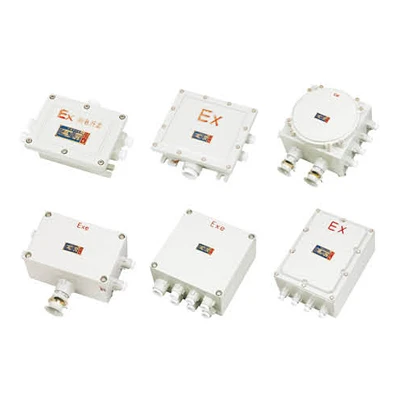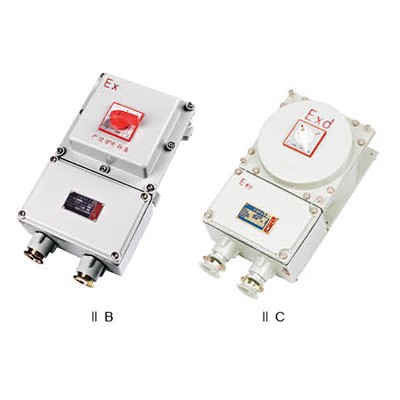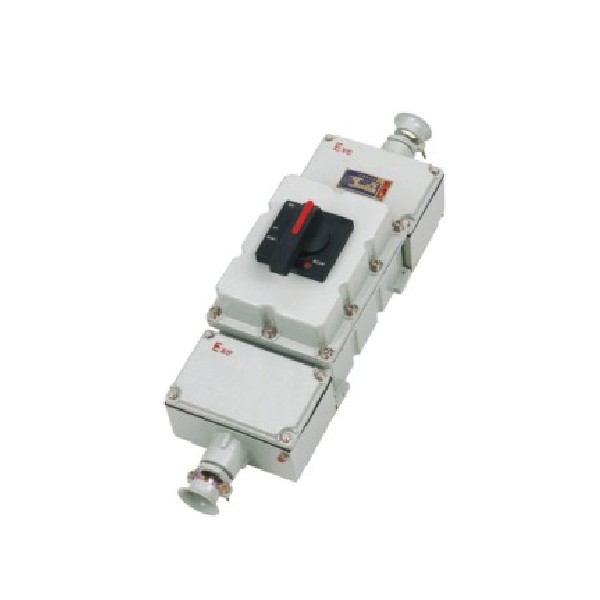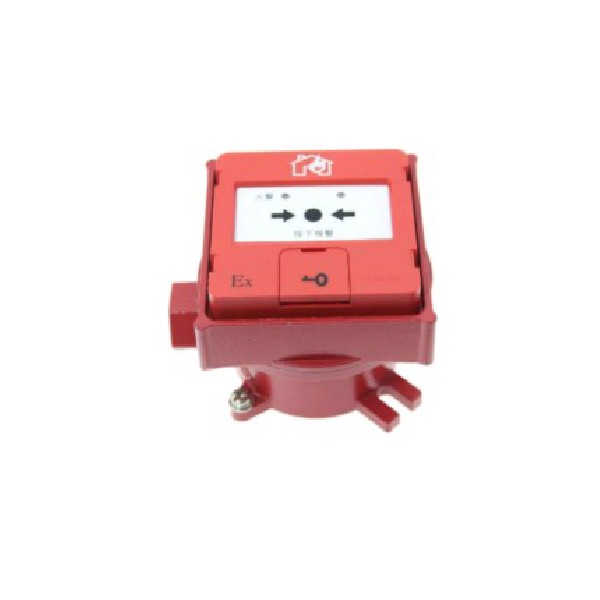Introduction

In the fast-paced world of industrial settings, fire safety is a top priority. Understanding fire protection for junction boxes is crucial in preventing potential hazards and ensuring a secure workplace. Common risks associated with junction box fires highlight the importance of implementing effective fire prevention measures.
Understanding Fire Protection for Junction Boxes
Fire protection for junction boxes is essential in safeguarding electrical connections and preventing the spread of fires. Utilizing 4-Inch Airtight Fire-Rated Junction Boxes and Fireproof connections with the OBO FireBox are vital in maintaining safety standards.
The Importance of Fire Safety in Industrial Settings
In industrial settings, fire safety is paramount to protect personnel and valuable assets from potential disasters. Implementing 2-hour fire rated electrical junction boxes and 1-hour fire rated electrical boxes ensures compliance with safety regulations and industry standards.
Common Risks Associated with Junction Box Fires
Junction box fires pose significant risks, potentially leading to catastrophic consequences if not addressed proactively. Utilizing 2-hour fire rated pull boxes and fire-rated enclosures can mitigate these risks and enhance overall workplace safety.
Recognizing Potential Hazards

When it comes to fire protection junction box, it's crucial to identify fire-prone environments in industrial settings. Areas with high levels of dust, flammable gases, or volatile substances pose a significant risk for junction box fires. Additionally, locations with extreme temperatures or humidity can also contribute to the potential hazards.
Identifying Fire-prone Environments in Industrial Settings
In industrial settings, areas such as chemical processing plants, refineries, and manufacturing facilities are particularly susceptible to junction box fires due to the presence of combustible materials and harsh operating conditions. These environments require special attention and proactive measures for fire protection junction box to mitigate the risk of fires.
Industrial settings are also prone to electrical malfunctions and overloads, which can lead to junction box fires. The high voltage and current present in these environments can cause overheating and arcing, increasing the likelihood of a fire. Additionally, the presence of dust, dirt, and other contaminants in industrial facilities can contribute to electrical faults, further elevating the risk of junction box fires.
Key Factors Contributing to Junction Box Fires
Key factors contributing to junction box fires include electrical overloading, short circuits, faulty wiring, and insulation breakdowns. These issues can lead to overheating and ignition within the junction box, resulting in a potential fire hazard. It's essential for industry professionals to be aware of these factors and take preventive actions.
Furthermore, poor maintenance and inspection of junction boxes can also contribute to fire incidents. Failure to regularly check for loose connections, damaged components, or signs of overheating can increase the risk of a fire. It's crucial for industry professionals to implement routine maintenance protocols and thorough inspections to ensure the safety and functionality of junction boxes within their facilities.
Case Studies on Junction Box Fire Incidents
Several documented case studies have highlighted the devastating consequences of junction box fires in industrial settings. These incidents have caused significant property damage, production downtime, and even posed serious threats to personnel safety. Learning from these real-life examples is crucial for implementing effective fire protection measures.
Best Practices for Fire Prevention

Implementing Regular Maintenance and Inspection Protocols
Regular maintenance and inspection protocols are crucial for ensuring the safety of junction boxes in industrial settings. By conducting routine checks, potential fire hazards can be identified and addressed before they escalate. This proactive approach not only prevents accidents but also extends the lifespan of junction boxes, saving on replacement costs.
In addition to routine checks, it is important to establish a schedule for regular maintenance of junction boxes in industrial settings. This can include tasks such as cleaning, tightening connections, and replacing worn-out components. By staying on top of maintenance, potential issues can be identified early and addressed promptly, reducing the risk of electrical failures and fire hazards. Furthermore, a well-maintained junction box is more likely to operate efficiently, leading to cost savings in the long run.
Utilizing Fire-resistant Materials for Junction Boxes
Utilizing fire-resistant materials such as the 4-Inch Airtight Fire-Rated Junction Box or the OBO FireBox is essential for mitigating the risk of fires in industrial environments. These specially designed junction boxes are constructed to withstand high temperatures and prevent the spread of fire, providing an added layer of protection to electrical connections.
In addition to using fire-resistant materials for junction boxes, it is also crucial to integrate advanced fire detection and suppression systems in industrial environments. These systems can quickly identify and alert personnel to potential fire hazards, allowing for swift action to be taken. Furthermore, with the inclusion of suppression systems, fires can be contained and extinguished before they have the chance to escalate, minimizing damage and ensuring the safety of personnel.
Integrating Advanced Fire Detection and Suppression Systems
Incorporating advanced fire detection and suppression systems into industrial facilities is a game-changer for preventing junction box fires. From 2-hour fire rated electrical junction boxes to 2-hour fire rated pull boxes, these systems provide early warning signals and swift response mechanisms to contain fires before they cause significant damage.
Industry Standards and Compliance

Understanding Regulatory Requirements for Junction Box Fire Protection
When it comes to fire protection junction box standards, it's crucial to adhere to regulatory requirements to ensure the safety of industrial settings. The 4-Inch Airtight Fire-Rated Junction Box is a prime example of a product that meets these standards, providing fireproof connections with the OBO FireBox for maximum protection. Understanding and complying with these regulations is essential for safeguarding against potential hazards.
It is important for industrial settings to ensure proper installation and wiring practices when using fire protection junction boxes. The 4-Inch Airtight Fire-Rated Junction Box, in combination with the OBO FireBox, offers a reliable solution for fireproof connections. By following the regulatory requirements and implementing these products, businesses can minimize the risk of fire hazards and protect their facilities, equipment, and personnel.
Ensuring Proper Installation and Wiring Practices
Proper installation and wiring practices play a significant role in maintaining fire safety in industrial environments. Utilizing 2-hour fire rated electrical junction boxes and 1-hour fire rated electrical boxes ensures that the infrastructure can withstand potential fires, minimizing risks. It's imperative to prioritize the use of fire-rated enclosures and pull boxes to uphold safety standards during installation processes.
Furthermore, regular training and education for personnel involved in installation and wiring processes is crucial for maintaining fire safety. By keeping workers updated on the latest safety standards and best practices, the risk of errors and oversights during installation can be significantly reduced. Training also ensures that personnel are aware of the proper use of fire-rated enclosures and pull boxes, ultimately contributing to a safer industrial environment.
Importance of Training and Education for Personnel
In addition to using fire-rated equipment, training and educating personnel on fire protection measures are essential components of compliance. Employees should be well-versed in the significance of utilizing 2-hour fire rated pull boxes and understanding the functionality of fire-rated junction boxes. By prioritizing education, companies can ensure that their workforce is equipped with the knowledge needed to maintain a safe working environment.
Case Studies and Success Stories

Real-life Examples of Preventing Junction Box Fires
In a recent industrial facility, the implementation of 4-Inch Airtight Fire-Rated Junction Boxes played a crucial role in preventing potential fires. These fireproof connections with the OBO FireBox provided a reliable solution for ensuring fire protection junction box compliance. The use of 2-hour fire rated electrical junction boxes also proved to be instrumental in mitigating the risk of fires, showcasing the effectiveness of proactive measures in preventing junction box fires.
Implementing Effective Fire Safety Measures in Industrial Facilities
One success story involves the installation of 1 hour fire rated electrical boxes in an industrial setting, significantly reducing the likelihood of junction box fires. Additionally, the utilization of 2-hour fire rated pull boxes further enhanced fire safety measures, demonstrating the importance of integrating such solutions into industrial facilities. The implementation of fire rated enclosures also contributed to creating a secure environment and minimizing potential risks associated with junction box fires.
Highlighting the Impact of Fire Protection Measures
The impact of these fire protection measures cannot be overstated, as they have effectively safeguarded industrial facilities against potential hazards. By prioritizing fire protection junction box compliance and utilizing advanced solutions such as 2 hour fire rated electrical junction boxes, industries have successfully minimized the risk of fires and ensured a safe working environment for their personnel. These success stories underscore the critical role that effective fire safety measures play in protecting against junction box fires.
The Future of Junction Box Fire Protection

With the rapid advancements in technology, the future of fire prevention for junction boxes looks promising. From smart sensors that can detect temperature changes to automated fire suppression systems, technology is revolutionizing the way we protect against fires in industrial settings. These innovations are crucial for enhancing safety and minimizing the risk of junction box fires.
Advancements in Technology for Fire Prevention
Cutting-edge technologies such as 4-Inch Airtight Fire-Rated Junction Boxes and Fireproof connections with the OBO FireBox are reshaping the landscape of fire protection for junction boxes. These innovative solutions offer enhanced resistance to high temperatures and prevent the spread of fires within electrical systems, providing a crucial layer of safety in industrial environments.
Innovations in Ex-Proof Manufacturing for Increased Safety
The development of 2-hour fire rated electrical junction boxes and 1-hour fire rated electrical boxes represents a significant leap forward in ensuring maximum safety for critical electrical connections. These advancements in ex-proof manufacturing are designed to withstand extreme heat conditions, offering increased protection against potential fire hazards.
Collaborating with Industry Leaders for Enhanced Fire Protection Solutions
By fostering collaborations with industry leaders, we can leverage collective expertise to develop even more effective fire protection solutions for junction boxes. This collaborative approach allows us to pool resources, share knowledge, and drive innovation that leads to the creation of advanced fire-rated enclosures and 2-hour fire rated pull boxes that set new standards for safety.
Conclusion

In conclusion, implementing fire protection measures for junction boxes is crucial in industrial environments to ensure the safety of personnel and assets. Regular maintenance and inspection protocols, along with the use of fire-resistant materials such as the 4-Inch Airtight Fire-Rated Junction Box and OBO FireBox, are essential for preventing potential hazards. By prioritizing proactive measures and compliance with industry standards, industrial facilities can create a safe and secure workplace.
Steps to Enhance Fire Safety in Industrial Environments
To enhance fire safety in industrial environments, it is imperative to prioritize regular maintenance and inspection protocols for junction boxes. Utilizing fire-resistant materials like the 2-hour fire rated electrical junction box and 2-hour fire rated pull box can significantly reduce the risk of fires. Additionally, integrating advanced fire detection and suppression systems can provide an added layer of protection against potential hazards.
Importance of Proactive Measures for Junction Box Fire Protection
Proactive measures for junction box fire protection are essential in mitigating risks associated with potential fires. The use of fireproof connections with the OBO FireBox and 1 hour fire rated electrical boxes can help prevent electrical malfunctions that may lead to fires. By staying compliant with industry standards and regulations, industrial facilities can ensure a safe working environment for their personnel.
Ensuring a Safe and Secure Workplace with Fire Protection Measures
By prioritizing fire protection measures such as the 2 hour fire rated Enclosure and Fire rated box, industrial facilities can create a safe and secure workplace environment. Implementing effective training programs on proper installation and wiring practices is crucial in preventing potential hazards related to junction box fires. Collaborating with industry leaders for enhanced fire protection solutions will further strengthen the overall safety measures within industrial settings.

